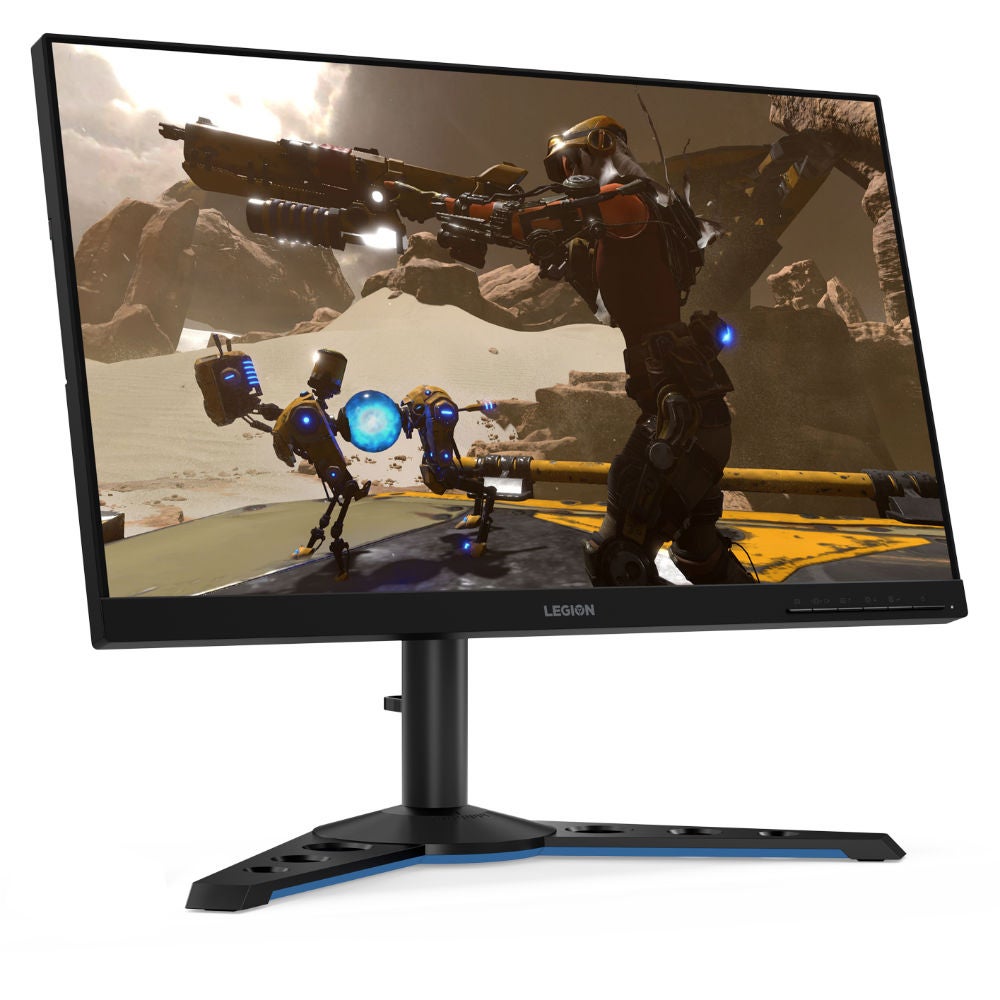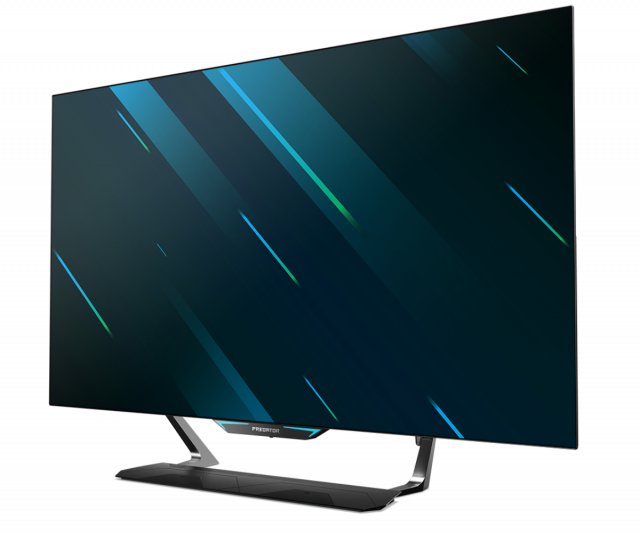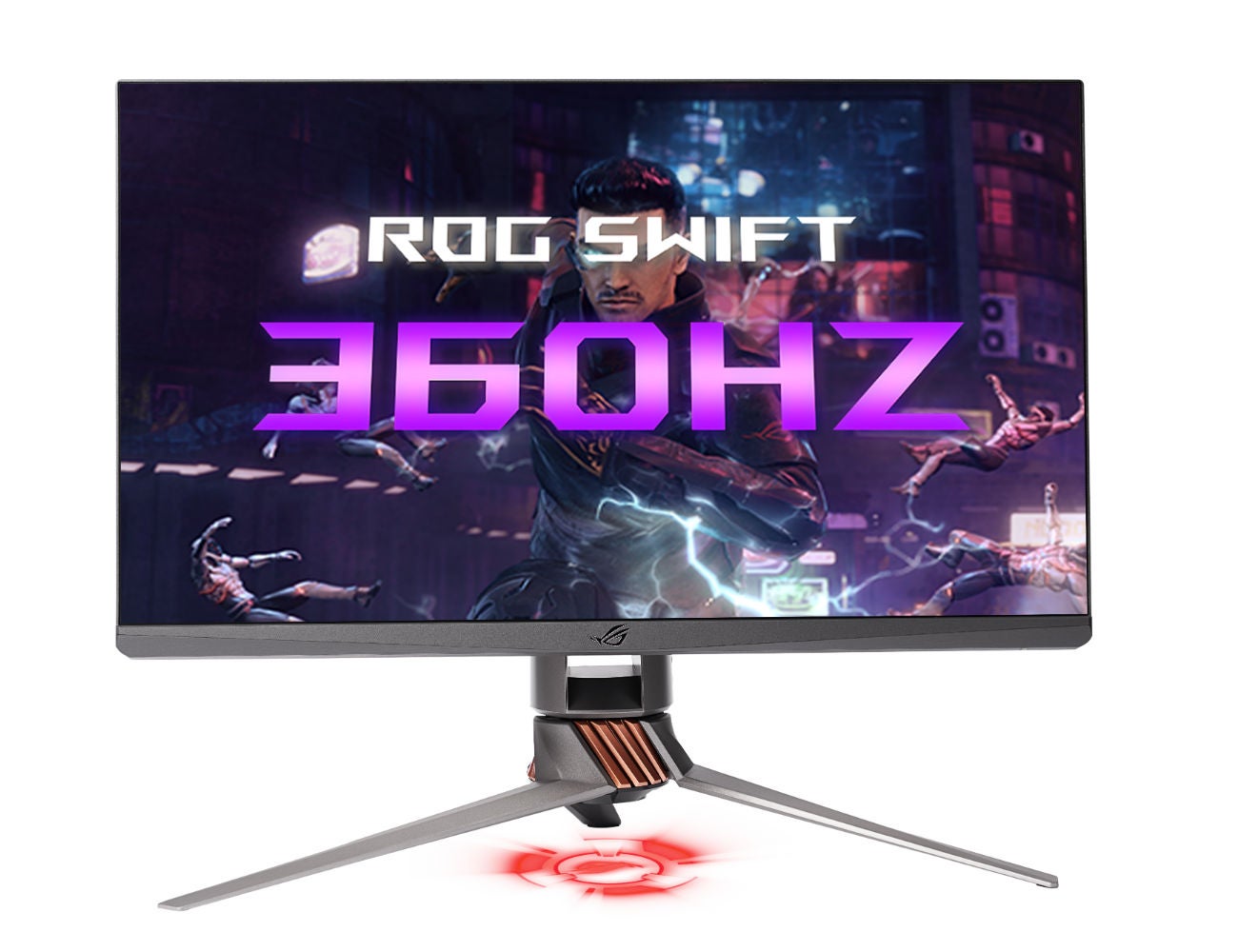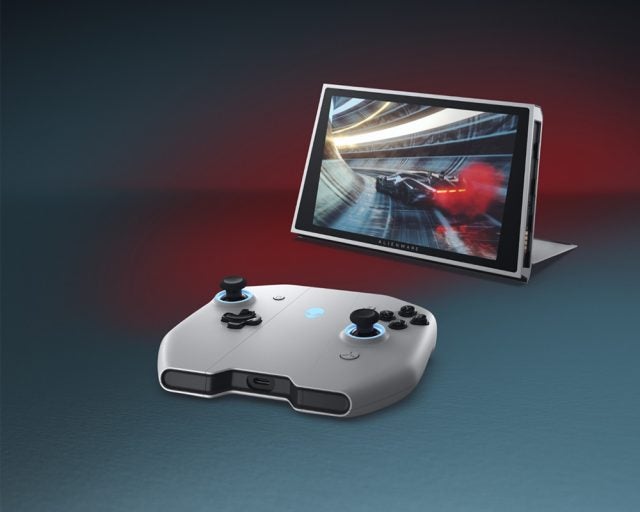It’s that time of year again, folks. CES is here and the great-and-good of the tech world has descended upon Las Vegas to reveal all of their latest wares for us to ogle at.
For 2020, most of the world’s computer manufacturers have decided to reveal extensive gaming lineups. We’ve seen new monitors with ever-faster refresh rates, as well as new laptops with ever-faster processors, and even some accessories including a new external GPU.
So, let’s take a quick(ish) look at all of the latest gaming tech from this year’s show.
Lenovo
Chinese company Lenovo always likes to make a splash at CES and this year has been no different. The company announced a new addition to its Legion line of gaming laptops, an external GPU, and a range of gaming monitors.
Lenovo Legion Y740S
The new Y740S is Lenovo’s thinnest-and-lightest gaming laptop yet, although compared to most modern laptops, it’s still a bit of a heffalump. It weighs almost 2 kilos and is 0.58-inches thick.
Still, you get a 15.6-inch 4K display and a choice of processors, with a desktop-class Intel Core i9 sitting atop the pile. The display features a fairly standard 60Hz refresh rate but is up to 600 nits bright, which is fine. You can also spec your Y740S up to include 32GB of DDR4 RAM (we’re on DDR5 now, but this should be fairly rapid) and 1TB of SSD storage — which should be speedy and spacious enough for all your gaming.
If you’re worried about cooling all of that hardware, Lenovo should have you covered. It promises a new thermal cooling design with four fans to keep everything running smoothly.
You’ll be able to max out your credit card on the Y740S when it launches in May, with prices starting at $1,099.
Lenovo BoostStation eGPU
If, for some reason, the Y740S doesn’t pack the power you require, you could connect it up to Lenovo’s new BoostStation external GPU.
External GPUs essentially do the intensive graphical processing required for gaming or hardcore graphics and rendering work so your poor laptop doesn’t have to. This means that you won’t need to worry about the extra weight or cooling requirements of powerful graphics cards and can retain a slim non-gaming laptop, such as the Dell XPS 13. They’re not perfect, however, as there will be some (likely imperceptible) input lag which might hinder your performance in fast-paced FPS games, for example.
The BoostStation uses a range of NVIDIA graphics cards, including the latest ray-tracing GTX 2060 cards. You’ll also be able to upgrade and expand the BoostStation when newer, faster, better, shinier graphics cards become available.
So, how much does all this extra performance cost? From $249 upwards. You’ll be able to buy it in May, just like the Y740S.
New Lenovo Gaming Monitors
You know what we need, right now? Gaming monitors — that’s right, monitors. Lenovo’s got you covered with three new displays to game away the night on.
Let’s start with the Y25-25, it’s a 24.5-inch monitor with a Full HD IPS panel surrounded by some very slim bezels. If that sounds underwhelming, the next bit won’t. The Y25-25 has a low resolution in order to maintain a solid 240Hz refresh rate — this means super-smooth and crisp graphics and movement, which might give you the edge in a fast-paced FPS, such as Overwatch. It’ll cost you $320 when it hits the shelves in June.
However, if you prefer your games slightly slower-paced but want a higher pixel count, you should take a look at the G32qc-10. It’s a curved, 31.5-inch display with a 2560×1440 resolution and a (still very impressive) 144Hz refresh rate. Prices start from $320 in March.
Finally, there’s the G27c. It’s cheaper than the other options, with prices starting $219.99 when it goes on sale in March. So, what are you getting for your money? The G27c is a curved 27-inch monitor with a Full HD resolution with a 165Hz refresh rate. So, a marginally lower resolution and higher refresh rate — you’ll just have to decide which balance of specs is right for you.






Acer
Acer’s made quite the splash at this year’s show, announcing laptops for almost every conceivable focus group-generated user case. It’s got laptops for designers, cheaper laptops with styluses, and laptops for on-the-go business people. However, we’re going to concentrate on its gaming monitors.
Predator X32
The X32 is, unsurprisingly, a 32-inch monitor. It has an impressively high UHD (3840×2160) resolution and offers up to 1440 nits bright — you could light a small street with brightness that high.
Like a lot of recently announced gaming monitors, the X32 also has a rapid 144Hz refresh rate. It comes with four USB 3.0 ports for plugging in all of your things, as well as three HDMI ports for connecting PCs. What’s more, it has dual 4W stereo speakers. So how much does it cost? Try $3,599.
Predator X38
You can probably guess approximately how large the X38 is. It’s a 37.5-inch curved monitor with a 3840×1600 resolution and a refresh rate that you can overclock to 175Hz. Presumably it’ll settle down at somewhere around 120Hz-144Hz.
Again, you get loads of ports for your bits and bobs, two 7W stereo speakers, and a tilting display to give you the perfect viewing angle.
Predator CG552K
The CG552K is Acer’s most ostentatious monitor from CES. It has a huge 55-inch, 4K resolution display, and a 120Hz refresh rate. Again, loads of ports, and even more audio power. You get dual 10W speakers, this time for extra clout. What’s more, you get customizable light strips for that authentic Pimp My Ride feel.
Prices start from $2,699 and it should go on sale at some point in the fall.






Asus
Asus is also jumping on the gaming monitor hype at CES this year, announcing a couple of gaming monitors.
ROG Swift 360Hz
Like the other brands on this list, Asus doesn’t get many points for imagination when it came to naming its latest monitor. The ROG Swift 360Hz has, unsurprisingly, a 360Hz refresh rate.
In order to support this crazy refresh rate, the display is just 24.5-inches across the diagonal and has a 1080p resolution. We don’t know exactly when it’ll be available nor how much it’ll cost.
ROG Swift PG32UQX
Asus’ second offering is a 32-incher. It also has a 4K HDR resolution and can reach a peak brightness of 1,400 nits. It gets a 144Hz Refresh rate for high-intensity games.
According to Asus, the PG32UQX also has “an Aura Sync-enabled RGB LED ROG logo” which lets “users coordinate the PG32UQX with other Aura Sync-enabled components for a fully harmonized battlestation,” whatever that means.
Like the ROG Swift 360Hz, we don’t know when the PG32UQX will be available nor how much it will cost.




Asus has also announced some gaming laptops and desktops.
TUF Gaming Laptops
Asus announced four gaming laptops at CES this year, two with TUF branding and two with ROG branding, with the TUF models being the most expensive and powerful of the four.
These latest TUF laptops, called the A15 and A17, are available with either 15- or 17-inch displays. Both models pack the latest and greatest AMD processors and graphics cards, including the ray-tracing RTX 2060 GPUs. This means you’ll be able to get desktop-level performance in a (relatively) compact package. Asus will also be shoehorning some 10th gen Intel chips into the TUF A15 and A17 later this year.
Both laptops also pack 144Hz refresh rate displays, which should make the games you play appear smoother on screen, and reduce screen-tearing when you’re really pushing your machine to the max.
What’s more, both of the models are smaller than their predecessors, with the A15 shrinking by 7% and the A17 by 8%. However, both models pack larger 90Wh batteries to give almost 9 hours of web browsing or just over 12 hours of video playback — running a game will, naturally, destroy those battery life claims.
Given the smaller size, extra power, and larger batteries, you might be worried about cooling. However, Asus claims to have it all under control — new grill designs and rear-facing heat exhaust system should keep everything in check, apparently.
The A15 and A17 models will be available before the end of March and, while we don’t know how much they’ll cost, we can assume they will be pricey.








Zephyrus Gaming Laptops
The Zephyrus range will “bring premium innovations and gaming-friendly features to a wider audience,” according to Asus.
So, what can you expect from these more accessible gaming laptops? Well, they come in two sizes, a 14-inch model (the G14) and a 15-inch model (the G15). Both models use AMD chips and graphics cards, and you can spec them up to include an RTX 2060 GPU. You can get up to an AMD Ryzen 7 processor, which isn’t the fastest Ryzen chip, but should be enough to run most new games, at least.
With the G14, you get a choice of a Full HD display that can run up to 120Hz, or you can get a WQHD (2560×1440) display with a lower refresh rate. On the G15, you’re stuck with Full HD panels, but you get a choice of a 144Hz or 240Hz refresh rate.
When it comes to RAM and storage, you get some fairly typical entry-level gaming machine specs. The G14 gets up to 32GB RAM with up to 1TB SSD storage. The G15, on the other hand, gets up to 32GB RAM or a choice of a 512GB or 1TB SSD.
Release date and price information is sketchy. Asus is claiming that both models will be released in either Q1 or Q2 2020. We’ve got no word on price, but we’d expect both models to start from around $800-ish.








ROG Strix Desktops
Rounding out the Asus announcements are four new gaming desktop towers. If you’re serious about gaming, you really want a tower rather than a laptop.
The GA35 and GT35 towers both feature top-of-the-line RTX 2080 Ti graphics cards and can run up to AMD Ryzen 9 processors, as well as feature up to 64GB of RAM. This, according to Asus, can deliver some very impressive performance numbers: The GA35, for example, can run Overwatch at up to 188 FPS at a 4K resolution. It can also run Shadow of the Tomb Raider at 73 FPS in a 4K resolution with Ultra detail.
The GA15 and GT15, meanwhile don’t pack quite the same punch but should still have enough power to run all the new games. You only get up to RTX 2070 Super GPUs and Ryzen 7 CPUs. You can spec both machines to include up to 32GB of RAM and up to a 1TB SSD. These numbers should let you run Overwatch at 240 FPS with a Full HD resolution.
The GA35 and GA15 should be available in Q1 2020, while the GT35 and GT15 will be launched “later in 2020”.




Dell
We’ve already done a whole separate article listing everything Dell has announced at CES this year but these are the gaming highlights.
Concept UFO
Imagine a Nintendo Switch that can play proper full-fat PC games — that’s basically the Concept UFO. It’s a handheld gaming PC with a 1900×1200 resolution 8-inch screen and detachable JoyCon style controllers.
This means you can play the UFO while holding it, or pop-out the kick stand and play it standing on a table, or you can even connect it to an external display such as a TV or monitor via a USB-C cable. Just like the Nintendo Switch.
Dell has told us that it runs a 10th gen Intel Core processor (although we don’t know which one specifically) and runs Windows 10. However, its been coy about everything else. We don’t know anything about battery life, price, or release date. We don’t even know whether Dell will make it — but given that journalists have been playing actual real games on the Concept UFO, it might be closer to production than we think.




Dell G5 15 Special Edition
The G5 15 gaming laptop already exists but, for CES, Dell has elected to stuff some of AMD’s latest processors and graphics cards under the hood. This means that you’ll get Ryzen processors and the latest Radeon RX 5600M graphics cards — this hardware also means that the G5 15 can use AMD’s SmartShift tech to automatically switch power between the CPU and GPU for improved performance.
The G5 15 also gets a 1TB SSD and a 2TB spinning HDD, meaning that you can load games quickly on the SSD, while storing everything else on the spinning drive.
Away from the internals, the G5 15 Special Edition gets 15.6-inch Full HD display. There’s also an optional 144Hz refresh panel, an optional WASD backlit keyboard.
It should cost a very reasonable $799 when it goes on sale in April 2020. It won’t be able to play the latest games at their highest settings, but it should be a very decent affordable option.
Alienware 25 Gaming Monitor
The Alienware 25 monitor is a 25-inch (obviously) monitor designed for fast-paced gaming. In fact, its one of the first monitors in the world to feature an IPS panel for easy viewing from different angles and a 240Hz refresh rate. It’ll also have a 1 millisecond response time, meaning that you’ll only have yourself to blame when you get beaten by a fourteen year old on Fortnite.
It’ll cost $500 when it goes on sale in March 11.
Razer
You know Razer, right? It’s the compant that makes one of the best gaming laptops on the market in the Razer Blade, and a genuine rival to the Dell XPS’ and MacBook Pros of the world in the Razer Blade Stealth.
Anyway, the company has returned to its gaming roots at CES this year, announcing some interesting new products deisgned to help make gaming easier than ever.
Razer Kishi Universal Controller
First up is the Kishi universal controller. The premise is simple, it’s two controllers that attach to either end of a smartphone to make mobile gaming easier.
The timing, however, is smart. Cloud gaming services are closer than ever and are rapidly gaining interest. What’s more, new(ish) mobile games such as Call of Duty Mobile are proving that phone-based games aren’t a simple fad.
The Kishi will be able to connect to almost any iPhone or Android phone with a hidden USB-C or Lightning Port connection and you’ll also be able to charge your phone while playing with pass-through charging ports.
The controllers for both Android and iOS will be available in early 2020.
Razer Tomahawk Gaming Desktop
The Tomahawk sounds intimidating, but Razer’s new desktop is designed to make the process of creating a gaming PC as easy as possible. The small, sleek chassis will make it easier to fit into small rooms while it also has an “advanced modular layout,” making it easier than ever to swap components in-and-out.
The aluminium body has glass on both sides, in order to ostentatiously show off its GPU, while also having an open vent design at the top to maintain cooling. What’s more, the rear panel features a lock-and-slide mechanism which allows for quick access to components.
You’ll be able to spec the Tomahawk up to compete with the best desktops on the market, with tenth-gen i9 processors and RTX 2080 GPUs available. You’ll also be able to upgrade all of the individual components, from the RAM, to the SSD, to the fans, as well as the CPU and GPU.
There’s no word on price yet, but we’d expect it to cost well over $1,000. It should go on sale this side of July.
Razer Eracing Simulator
If you wanted to create the ultimate racing game arcade cabinet, you’d probably end up with something like the Razer Eracing Simulator.
The seat moves up-and-down and side-to-side, powered by two hydrauic actuators. It uses two Full HD projectors to beam your game onto a 128-inch curved panel with a 202-degree field-of-view for a completely immersive experience. Even the racing harnesses simulate the G-forces you’d feel when racing a car, tightening under hard acceleration and cornering.
Razer hasn’t cut corners on the materials, either. The steering wheel made from aluminium and carbon fibre, and wrapped in leather, for example.
Apparently Razer “will continue to develop and build the ultimate Eracing Simulator,” so we’ve got no idea of when it’ll be available or how much it’ll cost.






Sony
Sony has announced the new Playstation logo and here it is:

Bet you didn’t see that coming. The internet, of course, reacted with glee:
Sony’s lead graphic designner coming up with the Playstation 5 logo pic.twitter.com/CkVWEmGgC2
— ❄Liru❄ (@LiruWerewolf_) January 7, 2020
However, Sony did also announce some interesting news about the Playstation 5. The new Dualshock 5 controllers will have an LED touchscreen where you’d normally find the Start and Select buttons. It’ll also have haptic feedback and adaptive triggers.
The actual Playstation will support 3D audio, will feature SSD storage, ray-tracing GPUs, and run Ultra HD Blu-Rays.
So, that’s it for the moment on the gaming front, but keep checking back to see what else has been announced this year.




